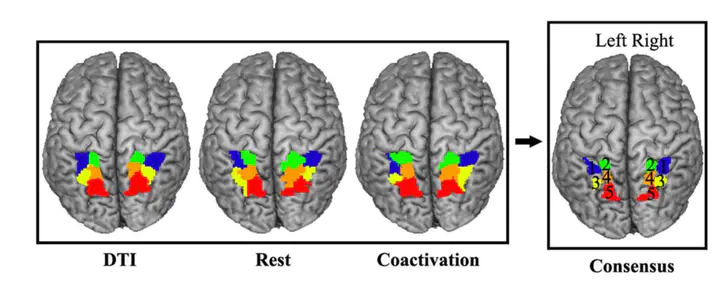Convergent functional architecture of the superior parietal lobule unraveled with multimodal neuroimaging approaches
 SPL parcellation
SPL parcellationAbstract
The superior parietal lobule (SPL) plays a pivotal role in many cognitive, perceptive, and motor-related processes. This implies that a mosaic of distinct functional and structural subregions may exist in this area. Recent studies have demonstrated that the ongoing spontaneous fluctuations in the brain at rest are highly structured and, like coactivation patterns, reflect the integration of cortical locations into long-distance networks. This suggests that the internal differentiation of a complex brain region may be revealed by interaction patterns that are reflected in different neuroimaging modalities. On the basis of this perspective, we aimed to identify a convergent functional organization of the SPL using multimodal neuroimaging approaches. The SPL was first parcellated based on its structural connections as well as on its resting-state connectivity and coactivation patterns. Then, post hoc functional characterizations and connectivity analyses were performed for each subregion. The three types of connectivity-based parcellations consistently identified five subregions in the SPL of each hemisphere. The two anterior subregions were found to be primarily involved in action processes and in visually guided visuomotor functions, whereas the three posterior subregions were primarily associated with visual perception, spatial cognition, reasoning, working memory, and attention. This parcellation scheme for the SPL was further supported by revealing distinct connectivity patterns for each subregion in all the used modalities. These results thus indicate a convergent functional architecture of the SPL that can be revealed based on different types of connectivity and is reflected by different functions and interactions.